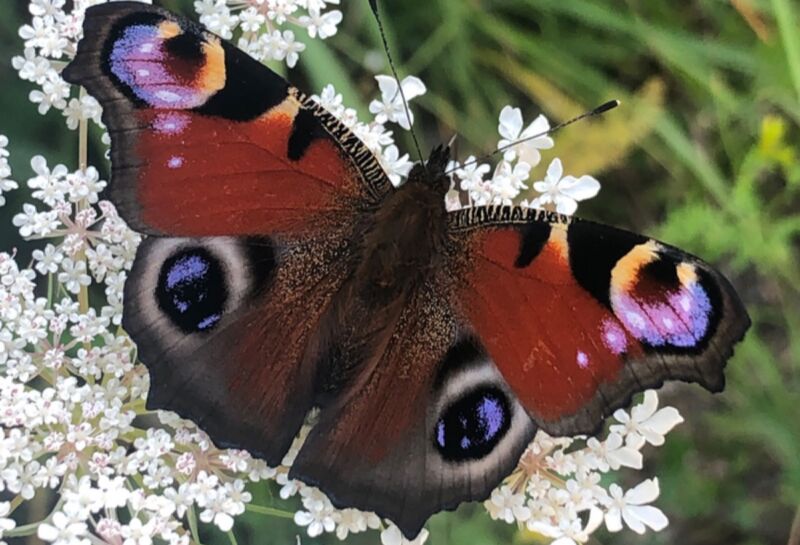Baby chicks are wary of prey with eyespots because of “Mona Lisa effect”

Enlarge / A peacock butterfly (Aglais io) has eyespots on the upper surface of each forewing and hindwing that appear to look you in the eyes-a perceptual phenomenon known as the "Mona Lisa effect." (credit: Hannah Rowland/CC BY-SA)
Visitors to the Louvre have long reported that the woman in Leonardo da Vinci's most famous painting, the Mona Lisa (aka La Gioconda), has eyes that seem to follow one around the room. A small 2019 study found that this perceptual "Mona Lisa effect" is indeed real-it just doesn't apply to the famous painting. As we reported at the time, she's actually "looking" to the right-hand side of her audience. But that type of effect does seem to play a significant role in the animal kingdom, according to a new paper published in the journal Frontiers in Ecology and Evolution-specifically in warding off potential predators.
"Eyespots with concentric circles seem to stare at potential predators from many directions, just like portraits that seem to maintain eye contact no matter where you are in the room," said co-author Hannah Rowland, who heads an independent research group on predators and toxic prey at the Max Planck Institute for Chemical Ecology in Jena, Germany. "This probably also explains why, in nature, eyespots have evolved independently in different animals to successfully deter enemies."
Since the 1960s, perceptual psychologists have known that we're very good at sensing when someone is looking at us. That includes the eerie sensation of being watched by the subjects of paintings or photographs, which typically occurs when the subject is looking straight ahead out of the image, at an angle between 0 and 5 degrees. There are also multiple species of fish, butterflies, moths, beetles, and praying mantids that boast circular markings on their bodies that look a lot like eyes-hence they're often called "eyespots." It's believed that these eyespots deflect the attention of predators to non-vital body parts, and/or intimidate or ward off attacks entirely, and there is scientific evidence that this is indeed the case.